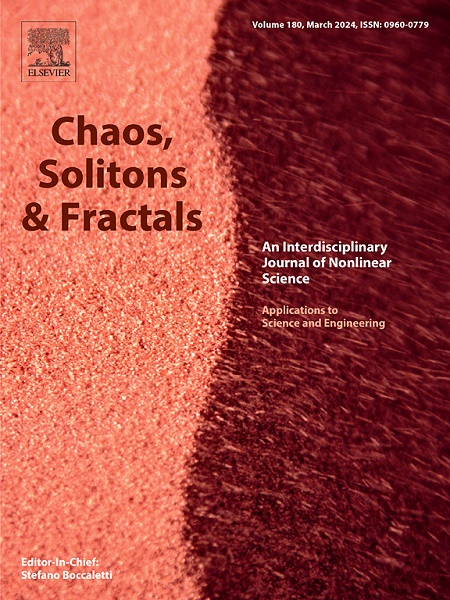具有辐射和扁原色的变质量R4BP的动力学行为
IF 5.6
1区 数学
Q1 MATHEMATICS, INTERDISCIPLINARY APPLICATIONS
引用次数: 0
摘要
本研究提出了可变质量第四体的动力学方程,考虑了来自第一原初体的辐射以及第二和第三原初体的扁平性。我们的研究结果表明,拉格朗日点的数量和位置演变对辐射、扁平度以及 uv 平面和 uw 平面扰动参数的变化非常敏感,导致出现三个、八个或十个拉格朗日点。我们利用 Routh-Hurwitz 稳定性准则进行线性稳定性分析,以证明这些拉格朗日点在特定条件下的不稳定性。此外,我们还研究了几何结构,包括不同系统能量下的零速度曲线和曲面,这说明随着系统能量的降低,潜在运动区域也在扩大。牛顿-拉斐森吸引盆地的几何结构也受到辐射参数和扁平系数变化的影响。此外,我们还应用 Lindstedt-Poincaré 技术推导了非共线拉格朗日点附近的二阶和三阶周期轨道,并通过数值模拟揭示了这些轨道的明显特征。本文章由计算机程序翻译,如有差异,请以英文原文为准。
Dynamic behavior of variable mass R4BP with radiating and oblate primaries
This study presents dynamical equations for a variable mass fourth body, accounting for radiation from the first primary body and oblateness in the second and third primary bodies. Our findings reveal that the number and positional evolution of Lagrangian points are highly sensitive to variations in radiation, oblateness, and perturbation parameters in the and plane, leading to the emergence of three, eight, or ten Lagrangian points. We employ linear stability analysis, utilizing the Routh–Hurwitz stability criterion, to demonstrate the instability of these Lagrangian points under specific conditions. Additionally, we investigate geometric structures, including zero velocity curves and surfaces at varying system energies, which illustrate an expansion of the potential motion region as system energy decreases. The geometry of the Newton–Raphson basins of attraction is also influenced by changes in radiation parameters and oblateness coefficients. Furthermore, we apply the Lindstedt–Poincaré technique to derive second- and third-order periodic orbits near non-collinear Lagrangian points, revealing distinct characteristics of these orbits through numerical simulations.
求助全文
通过发布文献求助,成功后即可免费获取论文全文。
去求助
来源期刊

Chaos Solitons & Fractals
物理-数学跨学科应用
CiteScore
13.20
自引率
10.30%
发文量
1087
审稿时长
9 months
期刊介绍:
Chaos, Solitons & Fractals strives to establish itself as a premier journal in the interdisciplinary realm of Nonlinear Science, Non-equilibrium, and Complex Phenomena. It welcomes submissions covering a broad spectrum of topics within this field, including dynamics, non-equilibrium processes in physics, chemistry, and geophysics, complex matter and networks, mathematical models, computational biology, applications to quantum and mesoscopic phenomena, fluctuations and random processes, self-organization, and social phenomena.
 求助内容:
求助内容: 应助结果提醒方式:
应助结果提醒方式:


